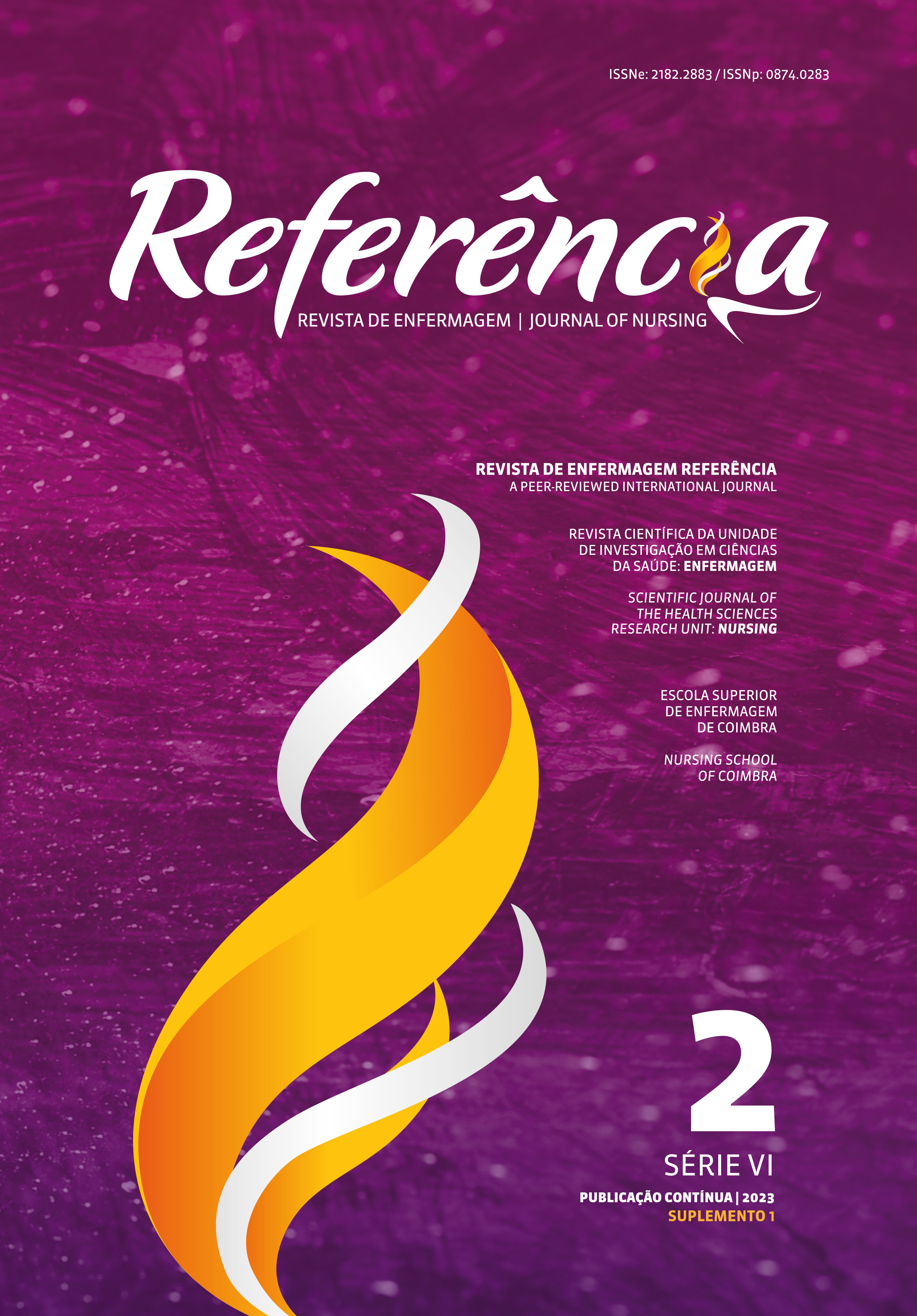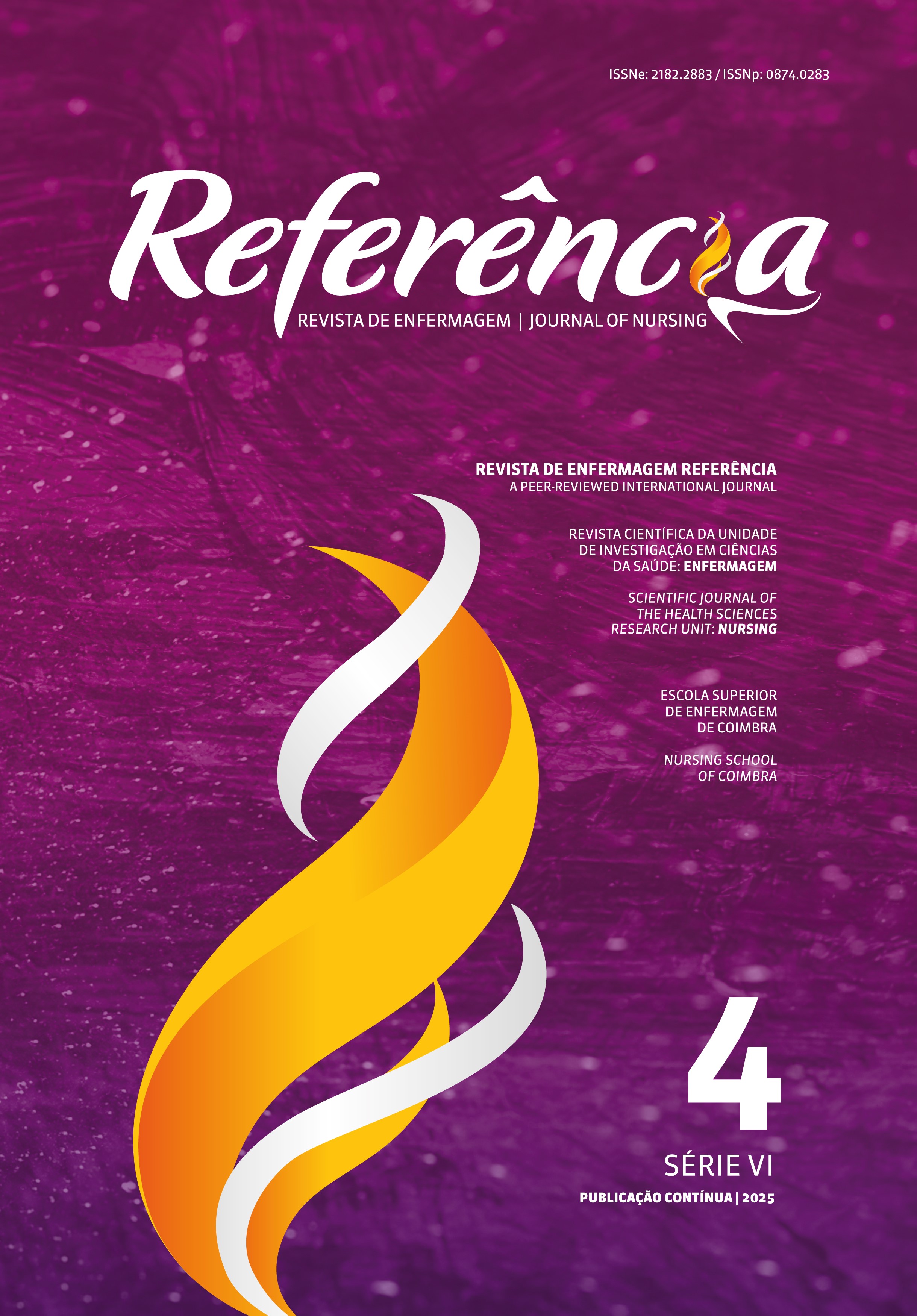Construção e validação de um modelo de decisão para a canulação da fistula arteriovenosa em hemodiálise
DOI:
https://doi.org/10.12707/RVI22021Palavras-chave:
enfermagem, fístula arteriovenosa, diálise renal, estudo de validaçãoResumo
Enquadramento: A fístula arteriovenosa é considerada como o acesso vascular de eleição para hemodiálise, a sua utilização pode ser realizada através de quatro técnicas de canulação distintas: Escada, Botoeira, MuST ou Área.
Objetivo: Construir e validar um instrumento de apoio à decisão para a técnica de canulação ideal da fistula arteriovenosa em hemodiálise.
Metodologia: Estudo metodológico em duas etapas mediante a realização da técnica de Delphi entre outubro 2021 e fevereiro de 2022 através de 27 juízes peritos. O instrumento de apoio ao modelode decisão para a canulação foi segmentado em quatro blocos: avaliação física, avaliação ecográfica esquema fotográfico com dermopigmentação e observações. Para análise, utilizou-se o índice de validade de conteúdo = 0,90.
Resultados: Obteve-se consenso final de juízes através de uma concordância unânime na estrutura do instrumento e um índice de validade de conteúdo global de 0,94.
Conclusão: O instrumento em estudo revelou-se válido em aparência e conteúdo para aplicação em consulta de enfermagem.
Downloads
Referências
Alexandre, N., & Coluci, M. (2011). Validade de conteúdo nos processos de construção e adaptação de instrumentos de medidas. Ciencia e Saude Coletiva, 16(7), 3061–3068. https://doi.org/10.1590/S1413-81232011000800006
British Renal Society. (2018). Clinical practice recommendations for needling of arteriovenous fistulae and grafts for haemodialysis. https://vo2k0qci4747qecahf07gktt-wpengine.netdna-ssl.com/wp-content/uploads/2018/09/Clinical-Practice-Recommendations-for-Needling-of-Arteriovenous-Fistulae-and-Grafts-for-Haemodialysis.pdf
Correia, B., Brandão, M., Lopes, R., Silva, P., Zaccaro, K., Benevides, A., Duarte, S., & Silva, R. (2020). Avaliação clínica da maturação da fístula arteriovenosa para hemodiálise: Revisão de escopo. Acta Paulista de Enfermagem, 34, 1–11. https://doi.org/10.37689/acta-ape/2021AR00232
Fielding, C., Bramley, L., Stalker, C., Brand, S., Toft, S., & Buchanan, H. (2022). Patients’ experiences of cannulation of arteriovenous access for haemodialysis: A qualitative systematic review. The Journal of Vascular Access. https://doi.org/10.1177/11297298211067630
Hohmann, E., Cote, M. P., & Brand, J. C. (2018). Research pearls: Expert consensus based evidence using the Delphi Method. Arthroscopy: Journal of Arthroscopic and Related Surgery, 34(12), 3278–3282. https://doi.org/10.1016/j.arthro.2018.10.004
Humphrey-Murto, S., Varpio, L., Gonsalves, C., & Wood, T. J. (2017). Using consensus group methods such as Delphi and Nominal Group in medical education research. Medical Teacher, 39(1), 14–19. https://doi.org/10.1080/0142159X.2017.1245856
Ibeas, J., Roca-Tey, R., Vallespín, J., Moreno, T., Moñux, G., Monrós, A., Pozo, J., Gruss, E., Arellano, M., Fontseré, N., Arenas, M., Merino, J., Revillo, J., Caro, P., Espada, C., Gaibar, A., Fernández-Lucas, M., Valdés, P., Quesada, F., … Barba, Á. (2017). Spanish clinical guidelines on vascular access for haemodialysis. Nefrologia, 37(Suppl 1), 1–191. https://doi.org/10.1016/S2013-2514(19)30100-2
Kal, Ö., Duman, E., & Kal, A. (2020). Dialysis efficacy and pain levels in relation to cannulation distance using the buttonhole technique. Renal Replacement Therapy, 6(1), 1–7. https://doi.org/10.1186/s41100-020-00291-y
Kumbar, L., Ramani, K., & Brouwer-Maier, D. (2020). Considerations in access cannulation: Traditional and evolving approaches. Advances in Chronic Kidney Disease, 27(3), 199–207. https://doi.org/10.1053/j.ackd.2020.03.007
Lok, C. E., Huber, T. S., Lee, T., Shenoy, S., Yevzlin, A. S., Abreo, K., Allon, M., Asif, A., Astor, B. C., Glickman, M. H., Graham, J., Moist, L. M., Rajan, D. K., Roberts, C., Vachharajani, T. J., & Valentini, R. P. (2020). KDOQI clinical practice guideline for vascular access: 2019 update. American Journal of Kidney Diseases, 75(4), S1–S164. https://doi.org/10.1053/j.ajkd.2019.12.001
Marticorena, R. (2019). The impact of cannulation on the development of complications in vascular access for hemodialysis: The emerging role of real-time imaging [Doctoral dissertation, University of Toronto]. ProQuest Dissertations and Theses Global. https://search.proquest.com/docview/2322785048?accountid=14660
Parisotto, M. T., Schoder, V. U., Miriunis, C., Grassmann, A. H., Scatizzi, L. P., Kaufmann, P., Stopper, A., & Marcelli, D. (2014). Cannulation technique influences arteriovenous fistula and graft survival. Kidney International, 86(4), 790–797. https://doi.org/10.1038/ki.2014.96
Pasquali, L. (2010). Instrumentação psicológica: Fundamentos e práticas (2nd ed.). Artmed. Peralta, R., Fazendeiro, J., & Carvalho, H. (2021). Safe needling of arteriovenous fistulae in patients on hemodialysis: Literature review and a new approach. Nephrology Nursing Journal: Journal of the American Nephrology Nurses’ Association, 48(2), 169–176. https://doi.org/10.37526/1526-744x.2021.48.2.169
Pinto, R., Sousa, C., Salgueiro, A., & Fernandes, I. (2021). Arteriovenous fistula cannulation in hemodialysis: A vascular access clinical practice guidelines narrative review. Journal of Vascular Access, 23(5), 825-831. https://doi.org/10.1177/11297298211006972
Robbin, M. L., Greene, T., Allon, M., Dember, L. M., Imrey, P. B., Cheung, A. K., Himmelfarb, J., Huber, T. S., Kaufman, J. S., Radeva, M. K., Roy-Chaudhury, P., Shiu, Y.-T., Vazquez, M. A., Umphrey, H. R., Alexander, L., Abts, C., Beck, G. J., Kusek, J. W., & Feldman, H. I. (2018). Prediction of arteriovenous fistul clinical maturation from postoperative ultrasound measurements: Findings from the hemodialysis fistula maturation study. Journal of the American Society of Nephrology, 29(11), 2735–2744. https://doi.org/10.1681/ASN.2017111225
Schmidli, J., Widmer, M., Basile, C., de Donato, G., Gallieni, M., Gibbons, C., Haage, P., Hamilton, G., Hedin, U., Kamper, L., Lazarides, M., Lindsey, B., Mestres, G., Pegoraro, M., Roy, J., Setacci, C., Shemesh, D., Tordoir, J., van Loon, M., … Roca-Tey, R. (2018). Vascular access: 2018 clinical practice guidelines of the european society for vascular surgery. European Journal of Vascular and Endovascular Surgery, 55(6), 757–818. https://doi.org/10.1016/j.ejvs.2018.02.001
Sousa, C., Apóstolo, J., Figueiredo, M., Martins, M., & Dias, V. (2013). Physical examination: How to examine the arm with arteriovenous fistula. Hemodialysis International, 17(2), 300–306. https://doi.org/10.1111/j.1542-4758.2012.00714.x
Stolic, R. V., Trajkovic, G. Z., Kostic, M., Lazic, B., Odalovic, B., Smilic, T. N., & Mitic, J. (2017). Cannulation technique and arteriovenous fistula survival in older adult patients on hemodialysis. Nephrology Nursing Journal : Journal of the American Nephrology Nurses’ Association, 44(5), 441–446.
Van Loon, M., Kessels, A., Van Der Sande, F., & Tordoir, J. (2009). Cannulation and vascular access-related complications in hemodialysis: Factors determining successful cannulation. Hemodialysis International, 13(4), 498–504. https://doi.org/10.1111/j.1542-4758.2009.00382.x






















